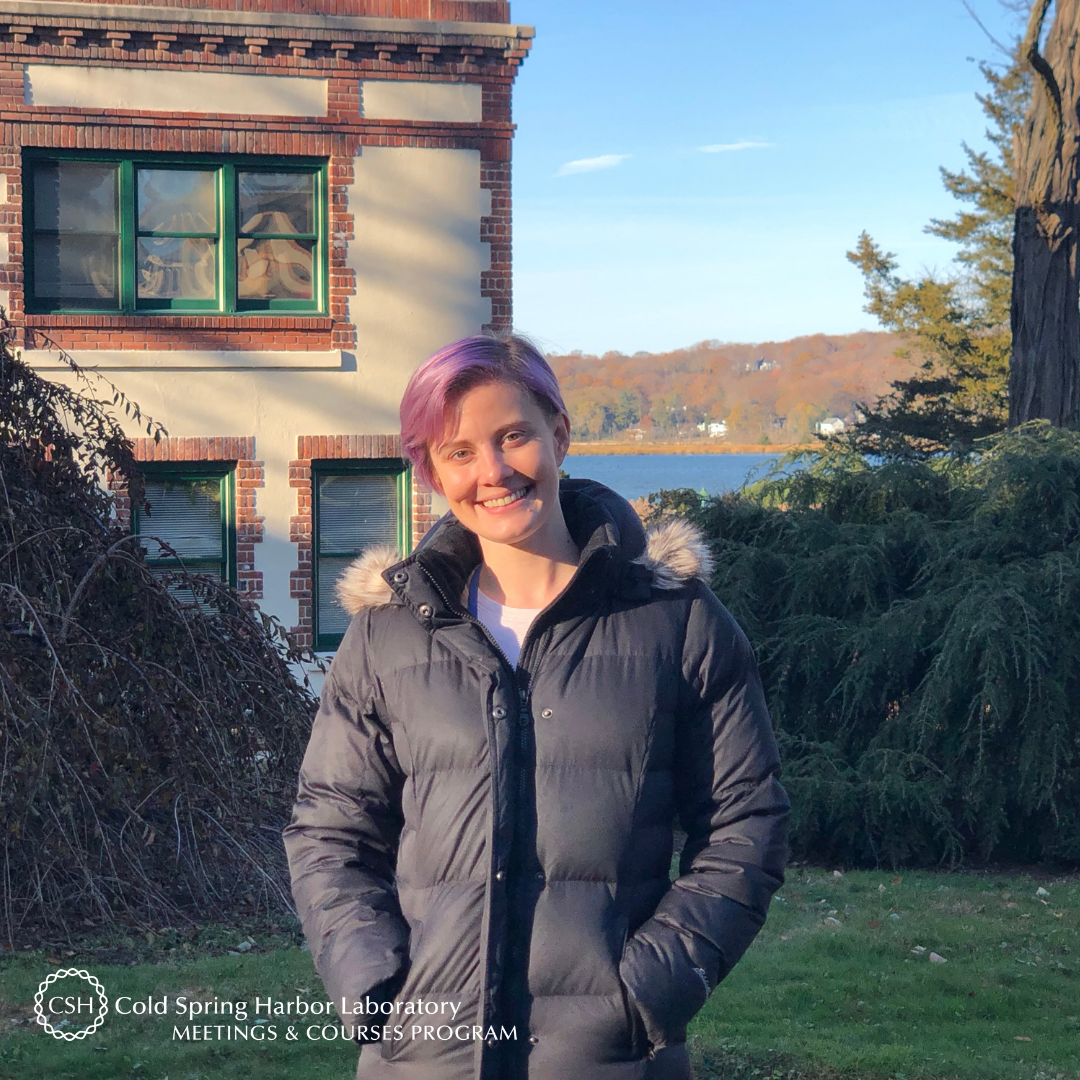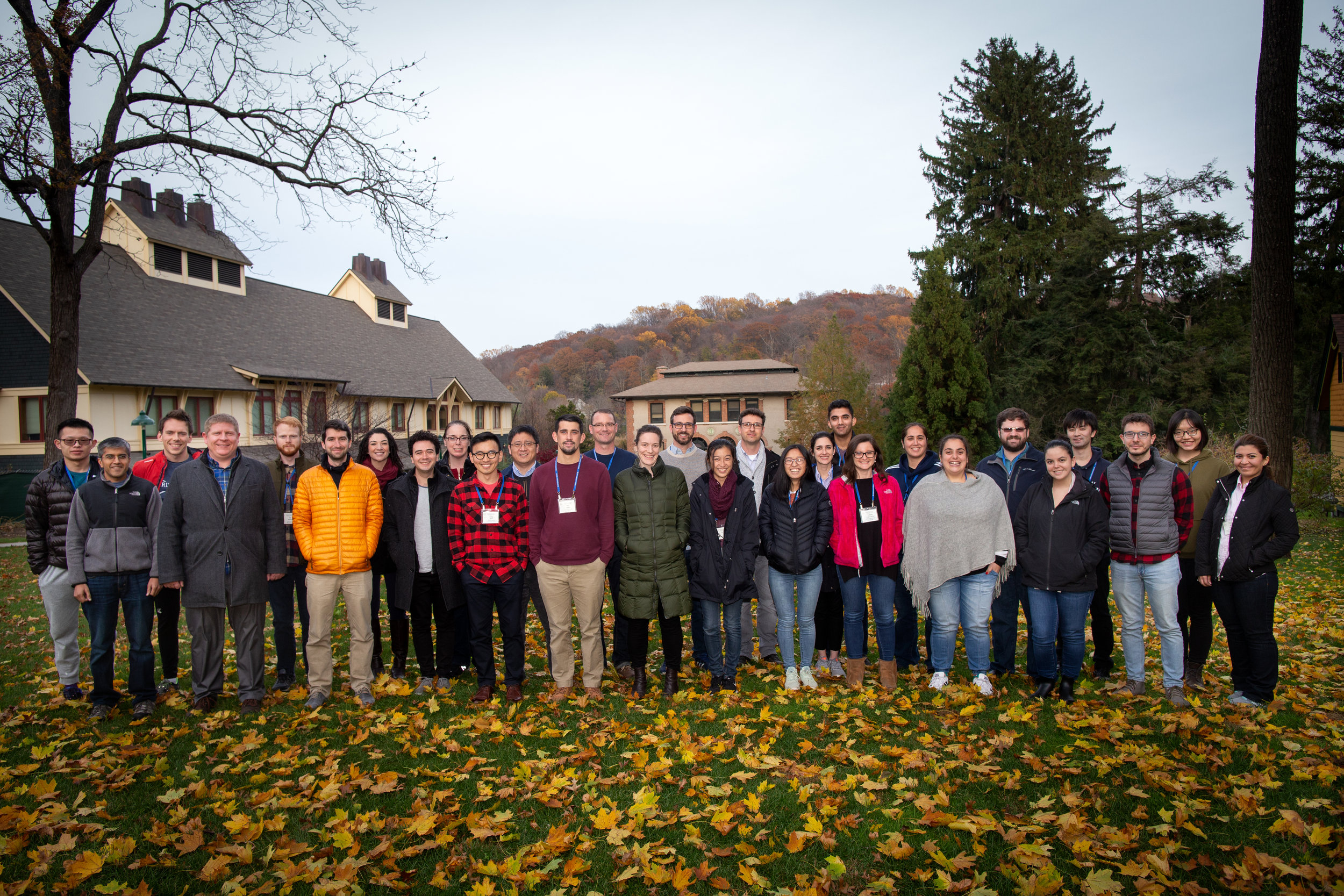Meet Erika Estrada of the University of California, Davis! Erika is a PhD Student in Linda Harris’ lab who serendipitously “flew” into science. She took part in this week’s Advanced Sequencing Technologies & Bioinformatics Analysis virtual course – her first at CSHL. Erika shares her career plans and we look forward to her shepherding the next generation of scientists.
Tell us about your research.
My research focuses on enhancing microbial food safety with an emphasizing on produce, and tree nuts.
How did you decide to focus on this area/project?
Honestly, serendipity. While I was flying back from a conference, the person sitting next to me was working on a presentation. I peeked on his screen and saw pictures of microbes, soil and water samples. I asked him about his job, he was an extension faculty at UC Davis and he offered me a job in his lab. After just a couple days of working in his lab, I knew that I wanted to study foodborne pathogens for the rest of my life.
What and/or who is the inspiration behind your scientific journey?
My future students. In the near future, I would like to become a professor in hopes to inspire, mentor and guide students through their academic career. I hope my story can show them that if I did it (got a PhD and become a scientist) then so can they.
Erika receiving the Developing Scientist Award at the 2019 International Association of Food Protection (IAFP) Meeting.
Where do you see yourself in five years?
My ultimate career goal is to become an extension faculty and a professor for an academic institution. As an extension specialist, I want to generate, transmit, and apply knowledge for the direct benefit of the food industry, farmers, and my community. I hope that through my research I am able to develop practices that enhance produce food safety.
As a professor, I want to share my knowledge and academic journey with the younger generations, especially those from disadvantaged backgrounds, like myself, to motivate them to pursue careers in science.
What do you love most about being a researcher?
I think what I love most about being a researcher is that I get to study something that no one has studied before. I get to provide answers to questions that ultimately have a positive impact in my community, and the food industry.
What drew you to apply to this course?
Currently, I am working on a project aiming to do comparative genomic analysis of multiple Salmonella isolates obtained from a 3-year pistachio survey in California. The ultimate goal of this project is to understand the underlying reasons for unique microbial contamination profile in pistachios. However, this is the first time during my academic career that I have to do use advanced Bioinformatics tools and techniques. During this quarantine, I have taken a couple of free online courses on UNIX, and read about different software that would be beneficial to process my sequences. Honestly, learning the basics of UNIX, NCBI databases, and data processing software using YouTube, online classes and different websites has been one of the most challenging and satisfying things I have done in my whole academic career. However, I believe that attending this course would be a valuable opportunity to obtain formalized training in the topic and to keep instilling my passion for learning about the application of sequencing technologies and bioinformatics analyses.
What feedback or advice would you share with someone considering to participate in this course?
Definitely try to get familiar with R and Unix so that you are able to truly focus on learning about the bioinformatics tools and technologies covered rather than focusing on understanding the code.
What’s the most memorable thing that happened during the Course?
I think the most memorable thing that happened during the course was learning about the power of R when we were building visual tool, such as graphs, plots and heat maps, to actually see the results of our analysis. After this course, I am committed to learn more about R.
Thank you to Erika for being this week's featured visitor. To meet other featured researchers - and discover the wide range of science that takes part in a CSHL meeting or course - go here.
Images provided by Erika Estrada











